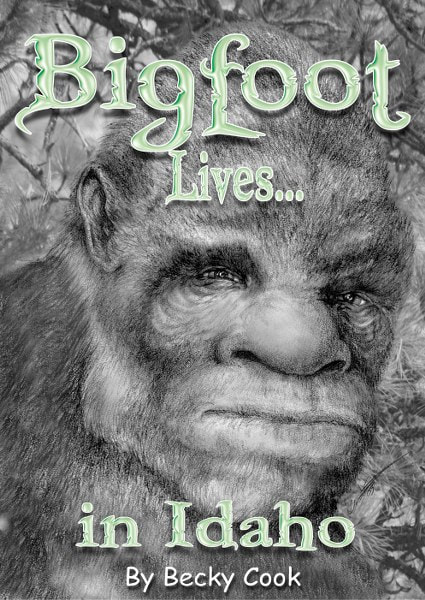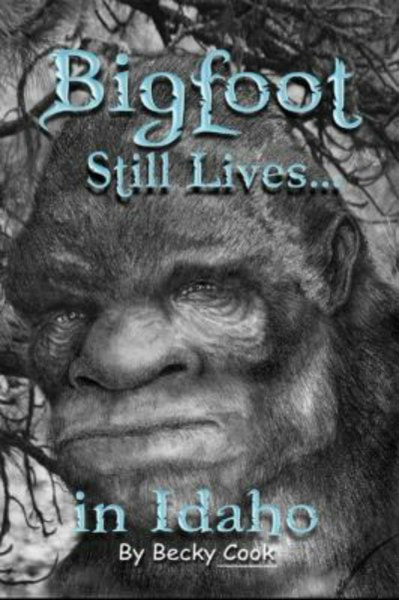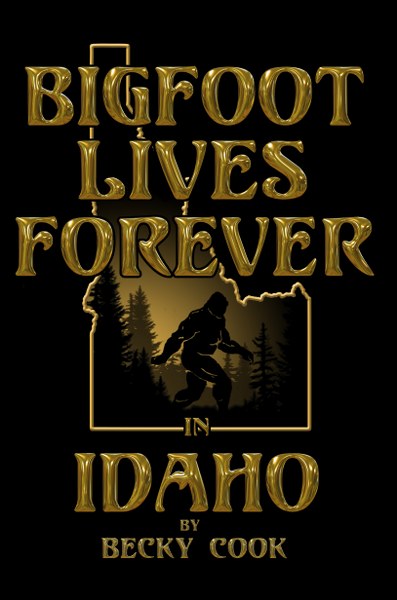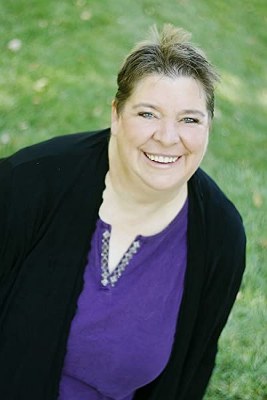I ran across a textbook (The Monster Theory Reader) and fell into that amazon rabbit hole. Here are a few interesting books I found!
The Monster Theory Reader
by Jeffrey Andrew Weinstock
Jan 15, 2020.
Info: upress.umn.edu.
University of Minnesota Press
Kindle Price: $19.25 600 pages, 33 b&w photos, 7 x 10
Zombies and vampires, banshees and basilisks, demons and wendigos, goblins, gorgons, golems, and ghosts. From the mythical monstrous races of the ancient world to the murderous cyborgs of our day, monsters have haunted the human imagination, giving shape to the fears and desires of their time. And as long as there have been monsters, there have been attempts to make sense of them, to explain where they come from and what they mean. This book collects the best of what contemporary scholars have to say on the subject, in the process creating a map of the monstrous across the vast and complex terrain of the human psyche.
Editor Jeffrey Andrew Weinstock prepares the way with a genealogy of monster theory, traveling from the earliest explanations of monsters through psychoanalysis, poststructuralism, and cultural studies, to the development of monster theory per se—and including Jeffrey Jerome Cohen’s foundational essay “Monster Theory (Seven Theses),” reproduced here in its entirety. There follow sections devoted to the terminology and concepts used in talking about monstrosity; the relevance of race, religion, gender, class, sexuality, and physical appearance; the application of monster theory to contemporary cultural concerns such as ecology, religion, and terrorism; and finally the possibilities monsters present for envisioning a different future.
Including the most interesting and important proponents of monster theory and its progenitors, from Sigmund Freud to Julia Kristeva to J. Halberstam, Donna Haraway, Barbara Creed, and Stephen T. Asma—as well as harder-to-find contributions such as Robin Wood’s and Masahiro Mori’s—this is the most extensive and comprehensive collection of scholarship on monsters and monstrosity across disciplines and methods ever to be assembled and will serve as an invaluable resource for students of the uncanny in all its guises.
Contents: Acknowledgments Introduction: A Genealogy of Monster Theory – Jeffrey Andrew Weinstock
1. Monster Culture (Seven Theses) – Jeffrey Jerome Cohen Part I. The Monster Theory Toolbox
2. The Uncanny – Sigmund Freud
3. The Uncanny Valley – Masahiro Mori
4. Approaching Abjection – Julia Kristeva
5. An Introduction to the American Horror Film – Robin Wood
6. Fantastic Biologies and the Structures of Horrific Imagery – Noël Carroll
7. Parasites and Perverts: An Introduction to Gothic Monstrosity – Jack Halberstam Part II. Monsterizing Difference
8. Monstrous Strangers at the Edge of the World: The Monstrous Races – Alexa Wright
9. Blood, Jews, and Monsters in Medieval Culture – Bettina Bildhauer
10. Horror and the Monstrous-Feminine: An Imaginary Abjection – Barbara Creed
11. The Monster and the Homosexual – Harry Benshoff
12. The Undead: A Haunted Whiteness – Annalee Newitz
13. Intolerable Ambiguity: Freak as/at the Limit – Elizabeth Grosz Part III. Monsters and Culture
14. Monsters and the Moral Imagination – Stephen T. Asma
15. Introduction to Religion and Its Monsters – Timothy Beal
16. The Self’s Clean and Proper Body – Margrit Shildrick 17. Haunting Modernity: Tanuki, Trains, and Transformation in Japan – Michael Dylan Foster
18. Invisible Monsters: Vision, Horror, and Contemporary Culture – Jeffrey Andrew Weinstock
19. Monster, Terrorist, Fag: The War on Terrorism and the Production of Docile Patriots – Jasbir K. Puar and Amit S. Rai
20. Zombie Trouble: Zombie Texts, Bare Life, and Displaced People – Jon Stratton Part IV. The Promises of Monsters
21. Beasts from the Deep – Erin Suzuki
22. Of Swamp Dragons: Mud, Megalopolis, and a Future for Ecocriticism – Anthony Lioi
23. The Promises of Monsters: A Regenerative Politics for Inappropriate/d Others – Donna Haraway
24. Posthuman Teratology – Patricia MacCormack Previous Publications Contributors Index

Zombies first shuffled across movie screens in 1932 in the low-budget Hollywood film White Zombie and were reimagined as undead flesh-eaters in George A. Romero’s The Night of the Living Dead almost four decades later. Today, zombies are omnipresent in global popular culture, from video games and top-rated cable shows in the United States to comic books and other visual art forms to low-budget films from Cuba and the Philippines. The zombie’s ability to embody a variety of cultural anxieties—ecological disaster, social and economic collapse, political extremism—has ensured its continued relevance and legibility, and has precipitated an unprecedented deluge of international scholarship.
Zombie studies manifested across academic disciplines in the humanities but also beyond, spreading into sociology, economics, computer science, mathematics, and even epidemiology. Zombie Theory collects the best interdisciplinary zombie scholarship from around the world. Essays portray the zombie not as a singular cultural figure or myth but show how the undead represent larger issues: the belief in an afterlife, fears of contagion and technology, the effect of capitalism and commodification, racial exclusion and oppression, dehumanization. As presented here, zombies are not simple metaphors; rather, they emerge as a critical mode for theoretical work. With its diverse disciplinary and methodological approaches, Zombie Theory thinks through what the walking undead reveal about our relationships to the world and to each other.
Contributors: Fred Botting, Kingston U; Samuel Byrnand, U of Canberra; Gerry Canavan, Marquette U; Jeffrey Jerome Cohen, George Washington U; Jean Comaroff, Harvard U; John Comaroff, Harvard U; Edward P. Comentale, Indiana U; Anna Mae Duane, U of Connecticut; Karen Embry, Portland Community College; Barry Keith Grant, Brock U; Edward Green, Roosevelt U; Lars Bang Larsen; Travis Linnemann, Eastern Kentucky U; Elizabeth McAlister, Wesleyan U; Shaka McGlotten, Purchase College-SUNY; David McNally, York U; Tavia Nyong’o, Yale U; Simon Orpana, U of Alberta; Steven Shaviro, Wayne State U; Ola Sigurdson, U of Gothenburg; Jon Stratton, University of South Australia; Eugene Thacker, The New School; Sherryl Vint, U of California Riverside; Priscilla Wald, Duke U; Tyler Wall, Eastern Kentucky U; Jen Webb, U of Canberra; Jeffrey Andrew Weinstock, Central Michigan U
Taking as its starting point the significant role of the photograph in modern mourning practices—particularly those surrounding public figures—Dead Matter theorizes the connections between the body and the image by looking at the corpse as a special instance of a body that is simultaneously thing and representation. Arguing that the evolving cultural understanding of photographic realism structures our relationship to the corpse, the book outlines a new politics of representation in which some bodies are more visible (and vulnerable) in death than others.
To begin interpreting the corpse as a representational object referring to the deceased, Margaret Schwartz examines the association between photography and embalming—both as aesthetics and as mourning practices. She introduces the concept of photographic indexicality, using it as a metric for comprehending the relationship between the body of a dead leader (including Abraham Lincoln, Vladimir Lenin, and Eva Perón) and the “body politic” for which it stands. She considers bodies known as victims of atrocity such as Emmett Till and Hamsa al-Khateeb to better grasp the ways in which the corpse as object may be called on to signify a marginalized body politic, at the expense of the social identity of the deceased. And she contemplates “tabloid bodies” such as Princess Diana’s and Michael Jackson’s, asserting that these corpses must remain invisible in order to maintain the deceased as a source of textual and value production.
Ultimately concluding that the evolving cultural understanding of photographic realism structures our relationship to the corpse, Dead Matter outlines the new politics of representation, in which death is exiled in favor of the late capitalist reality of bare life.

Hailed as "a feast" (Washington Post) and "a modern-day bestiary" (The New Yorker), Stephen Asma's On Monsters is a wide-ranging cultural and conceptual history of monsters--how they have evolved over time, what functions they have served for us, and what shapes they are likely to take in the future. Beginning at the time of Alexander the Great, the monsters come fast and furious--Behemoth and Leviathan, Gog and Magog, Satan and his demons, Grendel and Frankenstein, circus freaks and headless children, right up to the serial killers and terrorists of today and the post-human cyborgs of tomorrow. Monsters embody our deepest anxieties and vulnerabilities, Asma argues, but they also symbolize the mysterious and incoherent territory beyond the safe enclosures of rational thought. Exploring sources as diverse as philosophical treatises, scientific notebooks, and novels, Asma unravels traditional monster stories for the clues they offer about the inner logic of an era's fears and fascinations. In doing so, he illuminates the many ways monsters have become repositories for those human qualities that must be repudiated, externalized, and defeated.

An award-winning scholar and author charts four hundred years of monsters and how they reflect the culture that created them
Leo Braudy, a finalist for both the National Book Award and the National Book Critics Circle Award, has won accolades for revealing the complex and constantly shifting history behind seemingly unchanging ideas of fame, war, and masculinity.
Continuing his interest in the history of emotion, this book explores how fear has been shaped into images of monsters and monstrosity. From the Protestant Reformation to contemporary horror films and fiction, he explores four major types: the monster from nature (King Kong), the created monster (Frankenstein), the monster from within (Mr. Hyde), and the monster from the past (Dracula). Drawing upon deep historical and literary research, Braudy discusses the lasting presence of fearful imaginings in an age of scientific progress, viewing the detective genre as a rational riposte to the irrational world of the monstrous. Haunted is a compelling and incisive work by a writer at the height of his powers.

In the past decade, our rapidly changing world faced terrorism, global epidemics, economic and social strife, new communication technologies, immigration, and climate change to name a few. These fears and tensions reflect an evermore-interconnected global environment where increased mobility of people, technologies, and disease have produced great social, political, and economical uncertainty.
The essays in this collection examine how monstrosity has been used to manage these rising fears and tensions. Analyzing popular films and televisions shows, such as True Blood, Twilight, Paranormal Activity, District 9, Battlestar Galactica, and Avatar, it argues that monstrous narratives of the past decade have become omnipresent specifically because they represent collective social anxieties over resisting and embracing change in the 21st century.
The first comprehensive text that uses monstrosity not just as a metaphor for change, but rather a necessary condition through which change is lived and experienced in the 21st century, this approach introduces a different perspective toward the study of monstrosity in culture.
Exploring the pedagogical power of the monstrous, this collection of new essays describes innovative teaching strategies that use our cultural fascination with monsters to enhance learning in high school and college courses. The contributors discuss the implications of inviting fearsome creatures into the classroom, showing how they work to create compelling narratives and provide students a framework for analyzing history, culture, and everyday life. Essays explore ways of using the monstrous to teach literature, film, philosophy, theater, art history, religion, foreign language, and other subjects. Some sample syllabi, assignments, and class materials are provided.
Monsters arrived in 2011―and now they are back. Not only do they continue to live in our midst, but, as historian Scott Poole shows, these monsters are an important part of our past―a hideous obsession America cannot seem to escape.
Poole’s central argument in Monsters in America is that monster tales intertwine with America’s troubled history of racism, politics, class struggle, and gender inequality. The second edition of Monsters leads readers deeper into America’s tangled past to show how monsters continue to haunt contemporary American ideology.
By adding new discussions of the American West, Poole focuses intently on the Native American experience. He reveals how monster stories went west to Sand Creek and Wounded Knee, bringing the preoccupation with monsters into the twentieth century through the American Indian Movement. In his new preface and expanded conclusion, Poole’s tale connects to the present―illustrating the relationship between current social movements and their historical antecedents. This proven textbook also studies the social location of contemporary horror films, exploring, for example, how Get Out emerged from the context of the Black Lives Matter movement. Finally, in the new section "American Carnage," Poole challenges readers to assess what their own monster tales might be and how our sordid past horrors express themselves in our present cultural anxieties.
By the end of the book, Poole cautions that America’s monsters aren’t going away anytime soon. If specters of the past still haunt our present, they may yet invade our future. Monsters are here to stay.




























